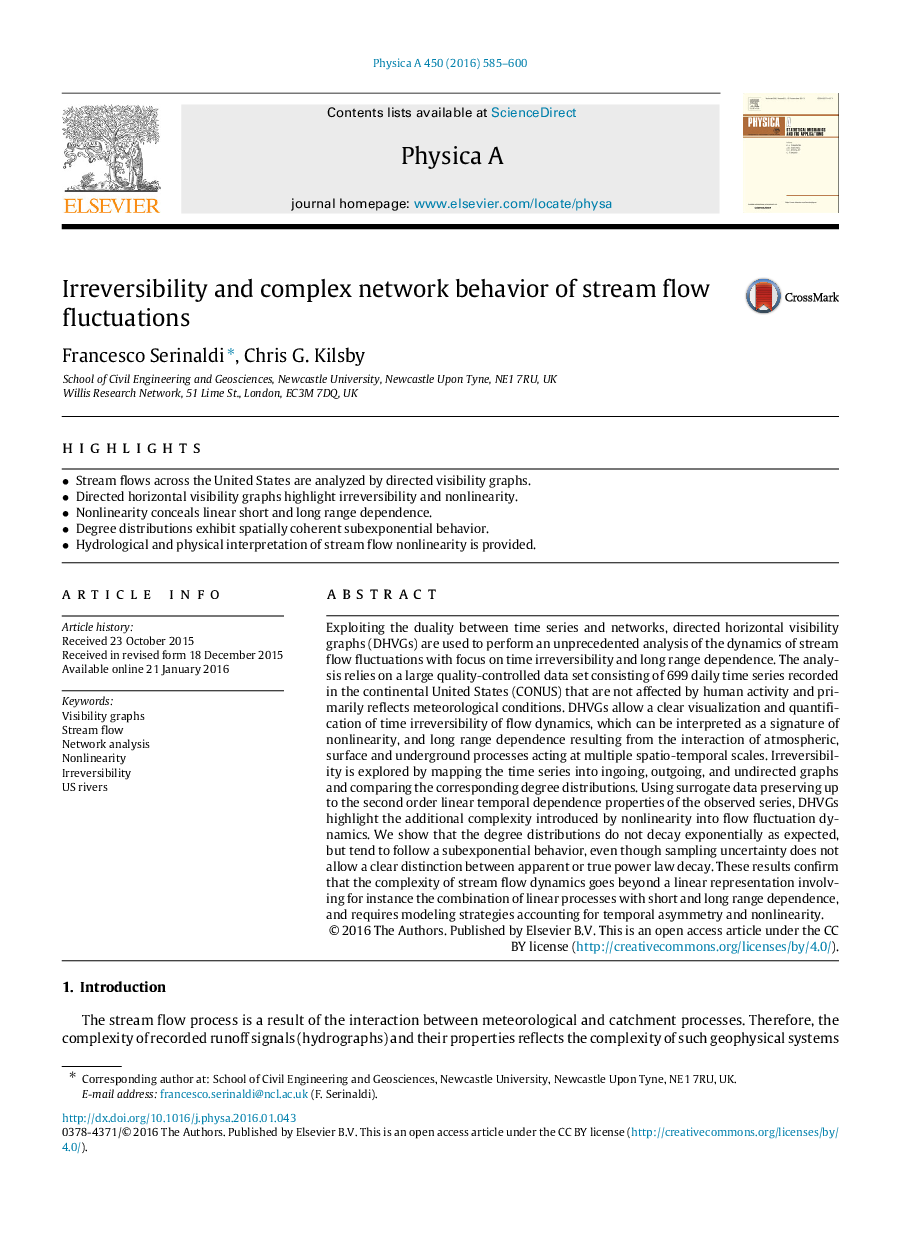| Article ID | Journal | Published Year | Pages | File Type |
|---|---|---|---|---|
| 7378257 | Physica A: Statistical Mechanics and its Applications | 2016 | 16 Pages |
Abstract
Exploiting the duality between time series and networks, directed horizontal visibility graphs (DHVGs) are used to perform an unprecedented analysis of the dynamics of stream flow fluctuations with focus on time irreversibility and long range dependence. The analysis relies on a large quality-controlled data set consisting of 699 daily time series recorded in the continental United States (CONUS) that are not affected by human activity and primarily reflects meteorological conditions. DHVGs allow a clear visualization and quantification of time irreversibility of flow dynamics, which can be interpreted as a signature of nonlinearity, and long range dependence resulting from the interaction of atmospheric, surface and underground processes acting at multiple spatio-temporal scales. Irreversibility is explored by mapping the time series into ingoing, outgoing, and undirected graphs and comparing the corresponding degree distributions. Using surrogate data preserving up to the second order linear temporal dependence properties of the observed series, DHVGs highlight the additional complexity introduced by nonlinearity into flow fluctuation dynamics. We show that the degree distributions do not decay exponentially as expected, but tend to follow a subexponential behavior, even though sampling uncertainty does not allow a clear distinction between apparent or true power law decay. These results confirm that the complexity of stream flow dynamics goes beyond a linear representation involving for instance the combination of linear processes with short and long range dependence, and requires modeling strategies accounting for temporal asymmetry and nonlinearity.
Related Topics
Physical Sciences and Engineering
Mathematics
Mathematical Physics
Authors
Francesco Serinaldi, Chris G. Kilsby,
